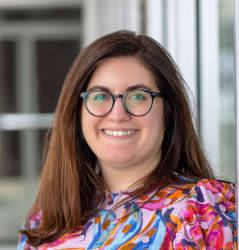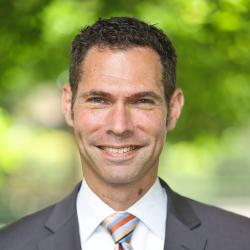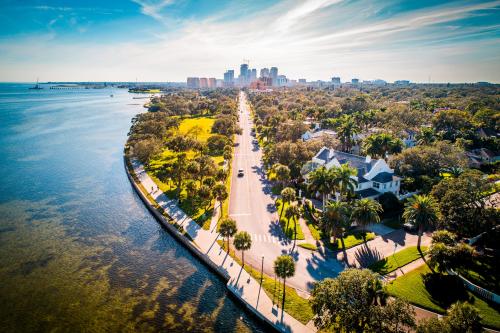Over the past 10 years, Portland, Ore. has seen its foreign direct investment (FDI) pipeline grow from 5% of the total share of regional investment to 30%. A deliberate effort by Greater Portland Inc., the regional public-private economic development organization (EDO) of Portland, led this progress through the integration of FDI strategy into mainstream economic development. In Portland, foreign business recruitment connects to all other aspects of the regional strategy, from global marketing programs, to industry growth, to talent attraction.
This represents an increasing trend in which regional EDOs proactively seek FDI and make it an integral part of their mission. EDO leaders invest the time, expertise, and resources required to recruit foreign businesses because they acknowledge the innate advantages of attracting foreign-owned firms. Foreign investment contributes to—and in some case drives—economic, innovation, and exports growth by infusing knowledge, technology, and global supply chain connections into local communities. Foreign activity can also catalyze additional foreign investments by signaling the region’s attractiveness globally.
Eight years into the Global Cities Initiative, many EDOs have developed plans to mainstream FDI into broader economic development strategy. As we explain in this brief, EDOs have gained a more sophisticated approach to FDI. They are now better connecting their international outreach strategy in service of local priority sectors. They intentionally target foreign markets. And they acknowledge the importance of mergers and acquisitions (M&A) and the fundamental connections between FDI and exports.
Supporting sector specializations
More and more U.S. metro areas are developing FDI strategies to solidify their established industry clusters. Many of the country’s most dynamic innovation ecosystems benefit largely from the critical contributions of outside practices, new technologies, and ideas brought by foreign companies.
For example, Wichita, Kan., with its rich aviation history, hosts a significant concentration of expertise in aerospace—appealing to foreign aircraft companies. Leveraging this concentration, Wichita State University collaborates with the National Institute for Aviation Research to attract foreign aerospace firms on campus. In 2017, French aircraft software developer Dassault Systèmes opened an innovation center at Wichita State, as did Airbus with the Airbus Americas Wichita Engineering Center.
Foreign investment also plays a key role in growing emerging sectors. As a deliberate move to diversify the region’s economic activities, Louisville Forward, the EDO of Louisville, Ky., has increasingly focused FDI efforts on cultivating the city’s emerging strengths in service sectors. The goal is to foster visibility and competitiveness in areas where the bulk of job creation is projected to concentrate in coming years.
Jeanine Duncliffe, director of international economic development at Louisville Forward, notes that “some of Louisville’s most dynamic foreign investments in recent years have been in professional and technical services.” Large firms such as Luxembourg-based Eurofins, multinational law firm Hogan Lovells, and Australia-based Computershare have established a presence in Louisville.
Setting clear foreign market targets
One fundamental component of FDI attraction is the management of a pipeline of business leads. A crowded landscape of private consultants sells lead generation services to connect EDOs with expanding firms. But EDOs also develop their own international activities to identify markets with the strongest potential for FDI.
A few years ago, Stephen Cheung, president of World Trade Center Los Angeles (WTCLA) and executive vice president of its parent company, the Los Angeles County Economic Development Corporation (LAEDC), noted that the lack of coordination between the region’s many existing resources placed an additional burden on public and private sectors, and that this fragmentation hindered access to markets for foreign investors. So WTCLA and LAEDC initiated a unified FDI data platform across six counties in Southern California. The “Foreign Direct Investment in Southern California” report has become a staple in the region, with its fourth edition published in June 2019. This 12-page document provides a clear inventory of top investing countries and contributes to unifying the region as a single market. WTCLA makes this success visible by showcasing its global footprint with nifty interactive mapping tools, as does Portland.
Going a step further, more EDOs are using sophisticated market prioritization findings to target foreign investors and their marketing activities. Market prioritization informs FDI recruitment through data-driven global markets analysis and accessibility assessment. In Portland, Greater Portland Inc. used an analysis of emerging opportunities, legacy FDI partners, and connectivity to shift from historic emphasis on Japan and Asia to also target Canada and Germany as opportunity markets. Portland’s global strategy is carefully tailored to focus on these areas, as illustrated in Greater Portland Inc.’s 2019 Work Plan.
Building on Portland’s experience, as well as eight other cities from the Global Cities Initiative, Brookings published a report on market prioritization to help EDOs focus resources, trade missions, and visibility campaigns, as well as track international prospects. This approach establishes a process and criteria by which data analysis, insights from key private and civic stakeholders, and broader market intelligence can align local economic priorities with international opportunities.
Better preparing for foreign mergers and acquisitions
Historically, FDI attraction focused on traditional greenfield investment—the physical expansion of foreign businesses through new jobs or buildings, adorned with eye-catching ribbon-cutting ceremonies. In contrast, anxiety and distrust often dominate the narrative on mergers and acquisitions, with stories of foreign capture of U.S. intellectual property, business closures, and mass layoffs.
Nonetheless, acquisition of existing businesses accounted for 97% of new FDI in the U.S. in 2017. Acknowledging that importance, EDOs have improved their response protocol to foreign inquiries as well as their welcome and follow-up tactics after each M&A. Through advice and training, EDOs started preparing local firms for the cultural and organizational changes that follow foreign acquisitions. These initiatives lead to better M&A outcomes, future investments, and hiring.
Louisville Forward launched an M&A working group to explore and make recommendations on acquisitions issues, with a particular attention to pre-middle market and middle market firms in key industries. Strategic use of business retention and expansion (BRE) efforts to learn (and teach) preparedness for transition and succession, and early engagement with new owners emerged as key focus areas for the economic development team. Sentry Steel, a Louisville steel fabrication firm with annual revenues around $10 million, was acquired by Japan-based Yokomori Stairs in 2017. Thanks in part to coordinated engagement by Louisville Forward and others, the firm stayed in Louisville and continues to grow there, with plans for an expansion and 62 new jobs. Similarly, the Charleston Regional Development Alliance created an M&A council to support M&A strategies.
Local teams have influence over the outcome of M&A through regional partnerships and better communication. In Portland, regional coordination led to another successful example of business retention post-M&A. Before the acquisition of Mentor Graphics by Siemens, Greater Portland Inc. coordinated action from the state EDO, the county chair, and the mayor to make the case that the company can remain in Portland and even expand its regional presence.
These improvements in FDI attraction make strategies more resilient to political shifts or funding cycles. They also show promising outcomes for the growth and international engagement of local economies. While U.S. regions are grappling over a difficult dialogue on international trade, they need to remain welcoming to attract and retain foreign business. With FDI attraction now part of the DNA of economic development, EDOs are finding ways to stay engaged internationally while balancing new domestic priorities.









